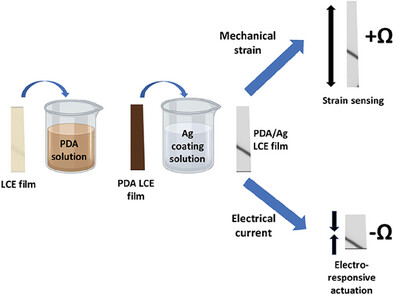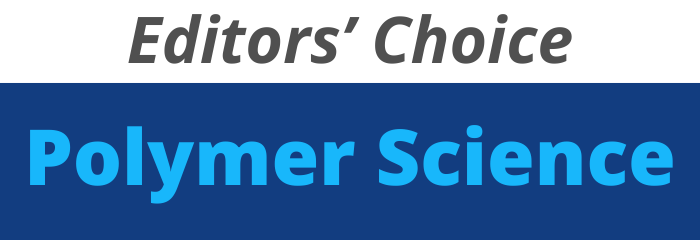Journal list menu
Export Citations
Download PDFs
Cover Picture
Molecular Interaction Mechanisms Between Lubricant-Infused Slippery Surfaces and Mussel-Inspired Polydopamine Adhesive and DOPA Moiety
- First Published: 21 October 2024

Front Cover: The molecular-level interaction mechanisms between versatile mussel-inspired chemistries, including 3,4-dihydroxyphenylalanine (DOPA) and polydopamine (PDA), and lubricant-infused slippery surfaces are investigated using nanomechanical techniques based on atomic force microscopy (AFM). The cover image depicts force measurements of mussel-derived adhesives using an AFM probe, symbolizing this investigation. More details can be found in article 2400276 by Hongbo Zeng and co-workers.
Back Cover
Polyurethane-Type Poly[3]rotaxanes Synthesized from Cyclodextrin-Based [3]Rotaxane Diol and Diisocyanates
- First Published: 21 October 2024
![Polyurethane-Type Poly[3]rotaxanes Synthesized from Cyclodextrin-Based [3]Rotaxane Diol and Diisocyanates Volume 45 Issue 20, 2024](/cms/asset/8681ab78-cf73-44bc-a9a2-ea3546276274/marc202470043-gra-0001-m.jpg)
Front Cover: Synthesis and property evaluation of cyclodextrin (CD)-based polyurethane-type poly[3]rotaxane is studied. The polyaddition between acetylated CD-based [3]rotaxane diol and various di-isocyanates affords polyurethanes, and the subsequent deprotection of acetyl groups on CD units generate hydroxyl groups, inducing drastic property change. More details can be found in article 2400441 by Yosuke Akae and Patrick Theato.
Masthead
Review
Melt Compounding of Poly(lactic acid)-Based Composites: Blending Strategies, Process Conditions, and Mechanical Properties
- First Published: 16 July 2024
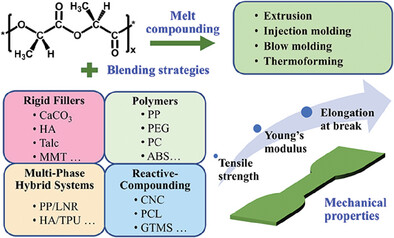
This review systemically summarizes the diverse processing conditions and mechanical properties of melting-compounded PLA-based materials, based on four blending strategies of rigid fillers-enhanced composites, polymer-enhanced composites, multi-phase composites, and reactive compounding composites.
Research Article
A New Polycyclic Naphthoxazine Resin: Facile Synthesis, Characterization, Polymerization, and Thermal Properties of Its Corresponding Thermosets
- First Published: 12 June 2024
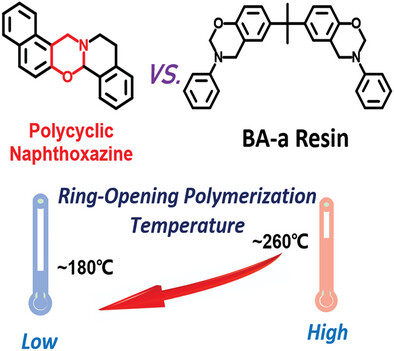
A novel polycyclic naphthoxazine resin is successfully synthesized via N, O-acetal forming reaction. The internal fused-ring structure contributes to its very low polymerization temperature. As a curing promoter, this naphthoxazine resin effectively reduces the ring-opening curing temperature of a commercialized benzoxazine without significantly sacrificing thermal stability and heat resistance.
Application of Organic Gel on Skin Realized by Hydrogel/Organic Gel Adhesion
- First Published: 16 June 2024
Light-Triggered Reversible Swelling of Azobenzene-Containing Block Copolymer Worms via Confined Deformation Prepared by Polymerization-Induced Self-Assembly
- First Published: 17 June 2024
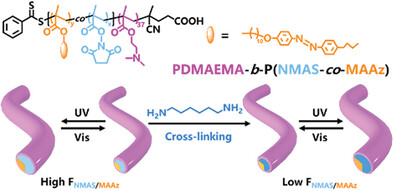
Light-triggered reversible swelling of worm-like nanoparticles containing high azobenzene content is realized by a relatively high feed ratio of NMAS/MAAz or crosslinking. The amount and types of crosslinkers are proven to have a great effect on the diameter variation. Moreover, photo- and reductant-responsive crosslinked worms are fabricated to demonstrate the high scalability of this method.
Silver Coated Multifunctional Liquid Crystalline Elastomer Polymeric Composites as Electro-Responsive and Piezo-Resistive Artificial Muscles
- First Published: 14 June 2024
How Depolymerization-Based Plasticization Affects the Process of Cold Crystallization in Poly(P-Dioxanone)
- First Published: 25 June 2024
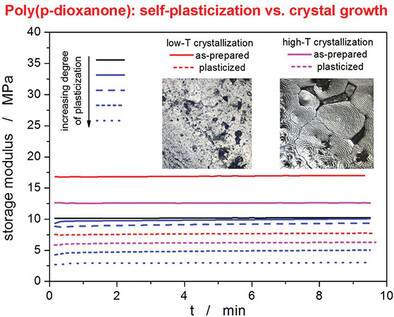
In this study, the influence of thermally induced self-plasticization on the crystallization of polydioxanone (PDX) is studied by differential scanning calorimetry (DSC). The self-plasticization in PDX decreases crystallization temperature and increases the crystal growth rapidity. The phenomena of α→α’ polymorphic transition and rigid amorphous phase are observed. Crystallization data are discussed in terms of the variable activation energy concept.
Gold Nanoparticles-Modified 2D Self-Assembled Amphiphilic Peptide Nanosheets with High Biocompatibility and Photothermal Therapy Efficiency
- First Published: 05 July 2024
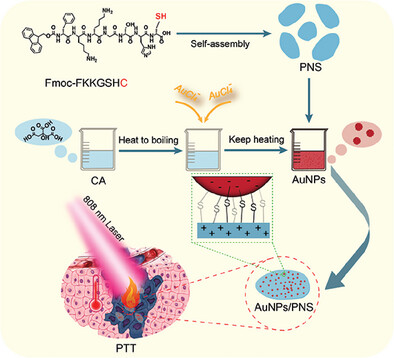
The controllable self-assembly of rationally designed amphiphilic peptide molecules into 2D peptide nanosheets (PNS), which are further used to conjugate with gold nanoparticles (AuNPs) to form AuNPs/PNS hybrid materials, is reported. The formed 2D hybrid peptide nanomaterials exhibit high biocompatibility and photothermal therapy efficiency of tumor cells, offering high potential for cancer therapy applications.
A General Approach for Photo-Oxidative Degradation of Various Polymers
- First Published: 15 July 2024
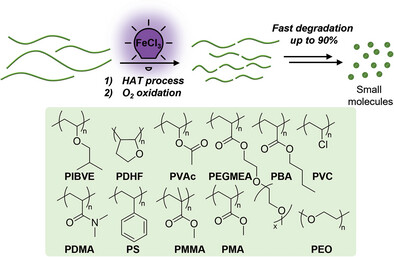
The escalating demand for plastics has increased global plastic waste, threatening the environment. This work introduces an innovative photo-oxidative degradation method capable of breaking down a wide range of polymers. This approach utilizes photo-mediated hydrogen atom transfer (HAT) followed by oxidation to efficiently degrade plastics, and remarkably, this process can be carried out under simple conditions using sunlight and air at room temperature.
Synthesis and Flame Retardant Behavior of Phosphorous- and Nitrogen-Containing Copolymer and Its Application in Polypropylene
- First Published: 15 July 2024
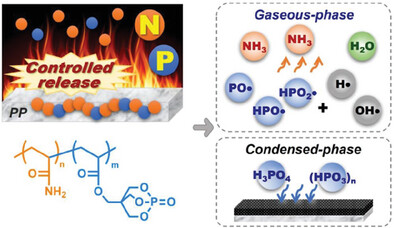
Phosphorus- and nitrogen-containing monomers are designed separately to synthesize their copolymer, and the phosphorus/nitrogen ratio significantly influences the synergistic flame retardant effect on polypropylene (PP). The flame retardant PP exhibits not only favorable processing characteristics but also enhanced mechanical properties.
Real-Time Monitoring of Particle Size in Emulsion Polymerization: Simultaneous Turbidity and Photon Density Wave Spectroscopy
- First Published: 17 July 2024
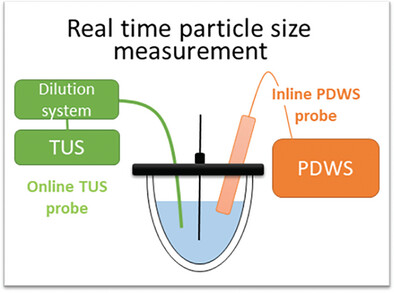
Particle size evolution in seeded semibatch emulsion polymerization is simultaneously monitored by two real-time monitoring techniques: online turbidity spectroscopy (TUS) and inline photon density wave spectroscopy (PDWS). The particle sizes retrieved from both real-time monitoring techniques match significantly well with the values obtained offline by dynamic light scattering (DLS), but avoiding the delay produced by the offline technique.
Molecular Interaction Mechanisms Between Lubricant-Infused Slippery Surfaces and Mussel-Inspired Polydopamine Adhesive and DOPA Moiety
- First Published: 19 July 2024
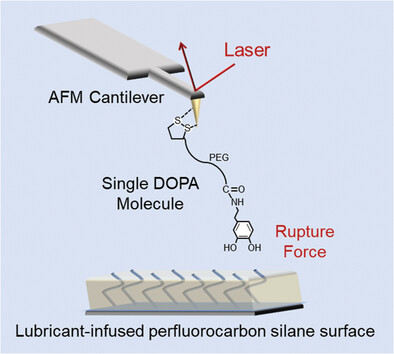
This work reveals that the infused lubricant layer serves as a barrier, inhibiting the contact and deposition of polydopamine (PDA) particles, as well as weakening the binding strength and stability between the versatile 3,4-dihydroxyphenylalanine (DOPA) moiety and underlying per-fluorinated surfaces, thereby achieving excellent antifouling performance against mussel-inspired chemistry.
Lignin-Based Carbon Fiber/Epoxy Resin Biocomposites with Excellent Fire Resistance and Mechanical Properties
- First Published: 22 July 2024
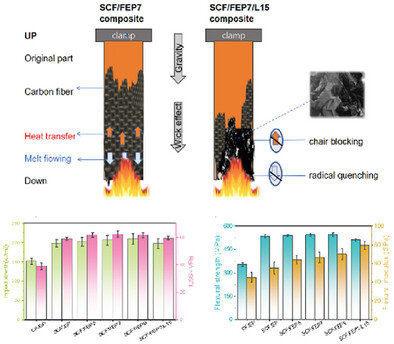
Carbon fiber-reinforced epoxy resin composites (CF/EP) are lightweight materials with excellent comprehensive performance. In this work, the sized CF with ELBEDK (SCF) is compounded with lignin, LMA and EP to obtain a flame-retardant lignin-based CF/EP (SCF/FEP/L) with high lignin content to lower the cost and improve the performance.
Synthesis of Dual-Responsive Amphiphilic Glycomacromolecules: Controlled Release of Glycan Ligands via pH and UV Stimuli
- First Published: 22 July 2024
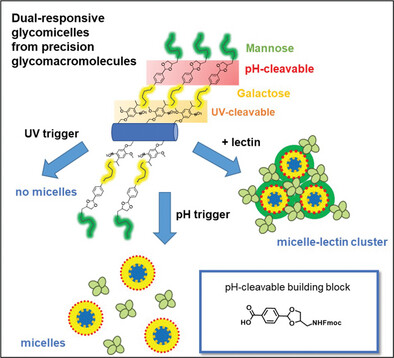
This study introduces dual-responsive amphiphilic glycomacromolecules with controlled release capabilities, triggered by pH and UV stimuli. By employing a novel acid-labile building block and a UV-cleavable linker, the independent and selective release of glycan ligands from glycofunctionalized micelles is possible. This results in altered binding behavior toward lectins, highlighting the potential toward targeted drug delivery applications and responsive materials.
Polyurethane-Type Poly[3]rotaxanes Synthesized from Cyclodextrin-Based [3]Rotaxane Diol and Diisocyanates
- First Published: 23 July 2024
![Polyurethane-Type Poly[3]rotaxanes Synthesized from Cyclodextrin-Based [3]Rotaxane Diol and Diisocyanates](/cms/asset/9114b188-3ed3-4b25-b290-0ed13987f8ba/marc202400441-gra-0001-m.jpg)
Polyurethane-type poly[3]rotaxane is synthesized by polyaddition between cyclodextrin (CD)-based [3]rotaxane diol and various diisocyanate species via (de)acetylation of CD units. Depending on the presence of the acetyl groups, poly[3]rotaxanes show different aggregation behavior or optical properties, which are induced by defined rotaxane structures.
Regioselective Synthesis of Pyrrole-Based Poly(arylenevinylene)s via Mn-Catalyzed Hydroarylation Polyaddition
- First Published: 24 July 2024

Mn-catalyzed hydroarylation polyaddition of 1-(2-pyrimidinyl)pyrrole with aromatic diynes is demonstrated. Use of MnBr(CO)5 as a precatalyst under the optimized reaction conditions achieved site- and regioselective hydroarylation polyaddition, giving the poly(arylenevinylene)s with excellent vinylene selectivity. Nonstoichiometric polyaddition that is derived intramolecular transfer of the Mn catalyst walking through the 1a moiety is also demonstrated.
Citric Acid and Polyvinyl Alcohol Induced PEDOT: PSS with Enhanced Electrical Conductivity and Stretchability for Eco-Friendly, Self-Healable, Wearable Organic Thermoelectrics
- First Published: 29 July 2024
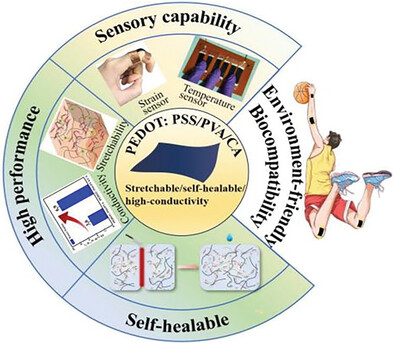
A green composite comprising polyvinyl alcohol (PVA), citric acid (CA), and PEDOT: PSS is engineered, enabling the formation of double hydrogen bonding networks. This alignment of microstructures results in concurrent improvements in stretchability, self-healing capabilities, and thermoelectric performance. Leveraging this composite, strain, and temperature sensors are developed, showcasing high resolution ideal for human–machine interaction and wearable devices.
A Sustainable Free-Standing Triboelectric Nanogenerator Made of Flexible Composite Film for Brake Pattern Recognition in Automobiles
- First Published: 31 July 2024
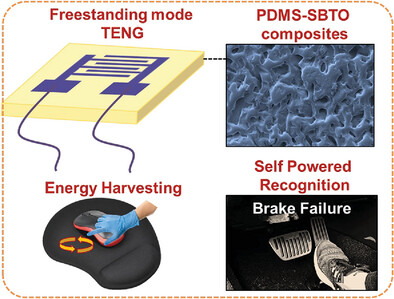
This work revolutionizes automotive safety and efficiency by using self-powered TENG sensors in real-time monitoring, predictive maintenance, and sustainable energy harvesting. This research highlights the integration of triboelectric nanogenerators (TENGs) in automotive systems and computer mice for efficient energy harvesting and enhancing automobile safety. SrBi2Ta2O9 perovskite blended with PDMS composite is utilized for TENG operating in the freestanding mode with interdigitated patterned aluminum electrodes.
A High-Quality Mixed Matrix Membrane with Nanosheets Assembled and Uniformly Dispersed Fillers for Ethanol Recovery
- First Published: 03 August 2024
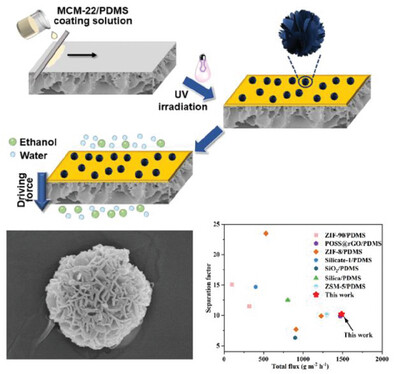
A zeolite-typed MCM-22 filler is reported that is doped into polydimethylsiloxane (PDMS) matrix by ultrafast photo-curing technique. The unique structure of nanosheets assembly layer by layer endows the continuous transfer channels toward penetrate molecules. The MCM-22/PDMS MMMs show great separation performance and operation stability, which is superior to those of the majority of MMMs that have been reported.
Heating Rate Sensitive Polyethylene Terephthalate
- First Published: 13 August 2024
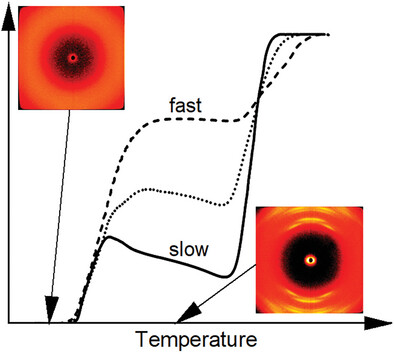
A novel approach for realizing a heating rate sensitive smart materials based on the glass transition Tg and the cold-crystallization of semi-crystalline polymers is demonstrated on the example of crosslinked polyethylene terephthalate (x-PET), which can be easily amorphously quenched and coldcrystallizes upon heating above Tg.
Controllable Self-Assembly of Carbon Nanotubes on Ammonium Polyphosphate as a Game-Changer for Flame Retardancy and Thermal Conductivity in Epoxy Resin
- First Published: 13 August 2024
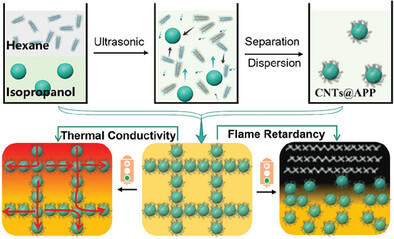
Utilizing an innovative approach, a novel dual-functional filler comprising carbon nanotubes and ammonium polyphosphate (CNTs@APP) is created through a simple, ultrasound-assisted self-assembly technique. Distinguished from traditional blending methods, this precise technique significantly enhances flame retardancy and thermal conductivity in epoxy resin (EP) nanocomposites. This innovative approach offers promising advancements for high-performance applications in various industries.






